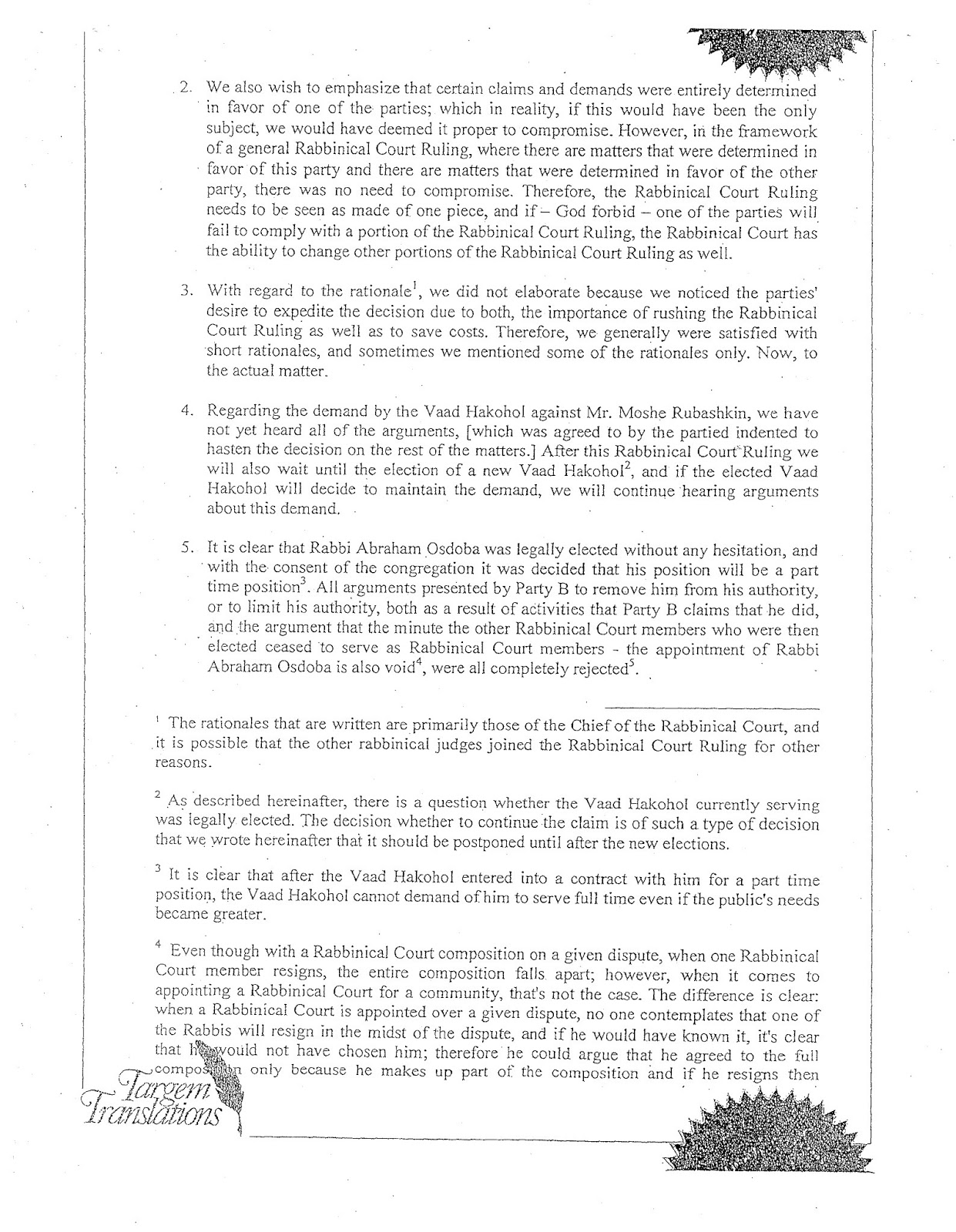The Psak Din of the Rosenberg Beis Din Zabla
30 Nissen 5770 (April 14, 2010)
Summary
of the Psak Din
The primary issues
were:
- The demand to remove or limit the authority of Rabbi Osdoba from the Beis Din.
- The demand to remove or limit the authority of Rabbi Schwei from the Beis Din.
- The question of whether the appointment of Rabbis Raitport and Segal at the time of Rabbi Schwei's election were legal, and what is the nature of the appointment.
- The question of whether the 5766 elections of Rabbis Raitport, Segal and Zirkind to the Beis Din was legal.
- The question of whether the 5769 elections for Vaad HaKohol and Gabboim were legal.
- The control over the Vaad HaKashrus and over the Kashrus
- Financial claims that the new Vaad Hakohol has against Moshe Rubashkin.
Rulings: [Note:
In order to see the details in the original Psak Din, we follow the
order in which it is written in the Psak Din, so the numbers above
and below may not match up.]
- Rabbi Osdoba's election was legal. His position is part-time. All demands to remove him or limit his authority as a result of alleged misdeeds, are rejected.
- The claims against Moshe Rubashkin will be heard in the future if the new Vaad wishes to pursue them.
- Rabbi Schwei's election was valid. All demands to remove him or limit his authority as a result of alleged misdeeds, are rejected.
- The positions of Rabbi Osdoba and Rabbi Schwei are equal, and Rabbi Osdoba does not have any superiority due to his seniority.
- The appontment of Rabbis Raitport and Segal at the time of the election of Rabbi Schwei was not to be a member of the Beis Din, but to be an assistant to the Beis Din, and is legal. They do not have the right to be referred to as member of the Beis Din or “Morah D'asra”.
- The elections during 5766 in which Rabbi Raitport, Rabbi Segal and Rabbi Zirkind were elected to the Beis Din were not conducted legally and the results are therefore invalid.
- Elections must be organized soon for a third Rabbi as a member of the Beis Din.
- There is a question of whether or not the 5769 elections for Vaad HaKohol and Gabboim were proper. Therefore, new elections should be organized as soon as possible, but those who were elected in 5769 should continue until the new elections (not the previously elected Vaad and Gabboim).
- There is a need to create a new Vaad HaKashrus, which shall be the executive body of the Rabbis and the Vaad Hakohol. After the elections for a new Rabbi, and for a new Vaad Hakohol, an effort shall be made to arrange how much authority to give them, who determines the composition of the Vaad, whether the Vaad has access to the income of Kashrus. If the Beis Din and the Vaad Hakohol do not succeed in creating the Vaad HaKashrus, there will be no escape but for the Rabbinical Court signed here to reconvene and decide.

















